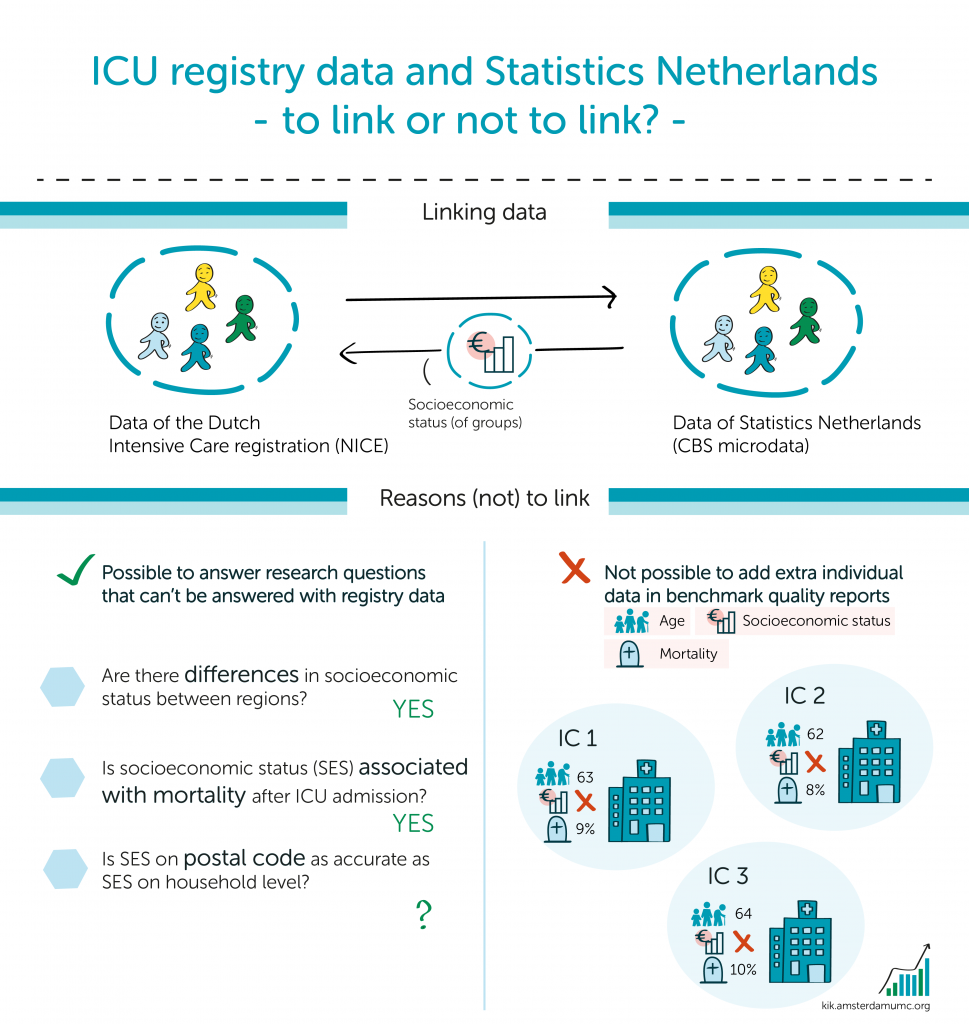Can you introduce your research topic?
Does socioeconomic status (SES) affect the outcomes of intensive care admissions? Could benchmarking between hospitals be improved by including SES? For these important research questions incorporating SES into the ICU registry data from NICE was necessary. My colleagues and I from the NICE registry collaborated with Statistics Netherlands (CBS) microdata to link SES information with the NICE database. In doing so, we encountered both challenges and opportunities.
What were the main challenges to link the NICE data with Statistics Netherlands (CBS) microdata?
Linking the NICE data with CBS microdata presented several challenges. Navigating the legal procedures proved complex, as did identifying the required data and understanding their structure. These challenges are not unique to our registry; therefore, we provided a clear overview of such issues. Two important challenges that registries encounter are obtaining institutional authorization and the restriction that patient-level data cannot leave the secure CBS environment. This latter means the data cannot be used in benchmark quality reports, which is an essential component for most registries. Nevertheless, I would like to emphasize that CBS provided guidance throughout the process. Once the legal requirements and linkage were in place, the subsequent steps went smoothly, and the analyses could be carried out efficiently.
What do you hope to achieve?
I aim to promote more efficient data reuse, which could help reduce the administrative burden on healthcare professionals and enable researchers to address more relevant and complex research questions. By linking the NICE registry with CBS microdata, we demonstrated that valuable data sources can be combined. Furthermore, I aim to gain insight into the effect of SES on ICU outcomes and whether this influences the benchmarking process.
Do you have tips for researchers of other quality registries?
My first tip is to prepare thoroughly; be aware of the legal, technical, and organizational requirements, and ensure that all contracts and agreements are in place. Second, I recommend collaborating with someone experienced in data linkage with CBS or contacting umbrella organizations such as Samenwerkende Kwaliteitsregistraties (SKR). The contact person at CBS can also help clarify procedures. Finally, I advise planning sufficient time and resources, as this process can be time-consuming and may require additional funding.
What are your future plans?
Together with researchers from Maastricht UMC, my colleagues from the NICE registry and I are currently examining which component (income, education level, employment status) is most important in the association between SES and mortality. We are also studying the long-term effects of SES on mortality. Next, we will investigate whether including SES can improve mortality risk predictions and whether this affects the current benchmark. Finally, we will investigate whether postal-code based SES is as accurate as household-level SES from CBS microdata. One of the main advantages of this is that the data is publicly available and therefore, we would be able to include the postal-code based SES to the ICU benchmark reports.
Curious and want to read more?
Koppeling van kwaliteitsregistraties en CBS-microdata in de zorg (in Dutch)

